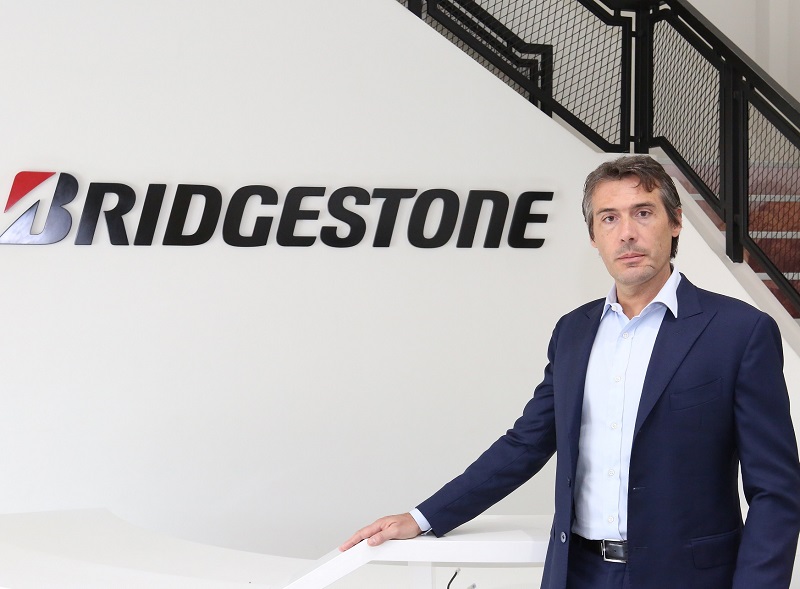Stefano Sanchini, Regional Managing Director, Bridgestone writes about the rise of digitally enabled solutions in urban mobility
The rapid industrialisation and urbanisation worldwide have brought about major challenges to urban mobility. In the Middle East, the scene is no different with urban mobility concerns continuing to be at the core of regional transport and infrastructure development discussions and policies.
With the region steadily moving towards its vision of sustainable and connected cities, developing a holistic model for mobility enhancement has become even more imperative.
Some countries in the region, particularly the Gulf states, have implemented multi-faceted transportation and mobility management strategies. Relevant policies are fundamental, especially as 67% of the world’s population is forecasted to live in cities by 2050.
Continuous modernisation
Part of the approaches in the GCC is heavy investments in and continuous modernisation and expansion of roads and public transport networks, which are being supervised by transport authorities with combined planning, investment, and regulation roles.
This tactic has made a huge difference in easing traffic congestion, connecting different parts of the country However expanding infrastructure capacity is not going to be a sustainable move in the long run amidst the population boom and exponential rise in the number of registered vehicles in this part of the world. In the UAE, approximately three million cars plied its roads as per the estimate of the World Health Organisation’s (WHO) Global Status Report on Road Safety in 2018. Recent research also revealed that Dubai has one of the highest ratios of residents to cars globally.
State-of-the-art transport solutions
Out-of-the-box and sustainable solutions are but necessary. Investments in new mobility modes have grown over the years, with the GCC region taking the lead in rolling out advanced approaches to transform their transportation networks. The call for innovation also continues to mount with the emergence of what is now known as the sharing economy. We have, thus, witnessed the rising prominence of e-hailing, car sharing, and other digitally enabled transport methods with great impact on mobility.
Dubai serves as a role model in terms of implementing state-of-the-art and innovative urban mobility systems as evidenced by its much-reported testing of hyperloop, self-driving vehicle, and taxi drone projects for future deployments.
The emirate embarks on ambitious initiatives exploring the future of urban mobility to help accelerate its bid to become the globe’s smartest city. Across the GCC, more large-scale and forward-looking initiatives are expected to be launched in support of the region’s steady transition to the Fourth Industrial Revolution.
The Gulf nations, along with other Middle Eastern states, are well-positioned for more effective adoption of unconventional mobility modes due to various reasons, which include fast government decision-making processes and a growing focus on ultramodern urban transportation experience.
New mobility systems require creating a more efficient and highly integrated ecosystem driven mainly by data. For such an ecosystem to be effective, it should support multi-modal and automated transport solutions. In addition, the region’s ambitious development and transformation programs designed to raise its global competitiveness and attractiveness will further hasten the establishment of this modern transport environment.
Role of the tyre industry
Technologies play a pivotal role in improving human movement in communities. This development has pushed the tyre industry to evolve with the needs of the times and contribute to mobility enhancement.
In this regard, tyre manufacturers have focused on telematic solutions, in-vehicle data, data sharing, and connected vehicles, to cite a few, to help improve connectivity and road safety on top of promoting sustainability.
They have begun leveraging next-generation technologies such as the Internet of Things (IoT) and artificial intelligence (AI) to transform tyres’ overall role in mobility. Today, we have heard talks about smart tyres, which will have the ability to collect data for optimised performance and safety, and Tyres-as-a-Service business models. The full implementation of the 5G technology is seen to further impact the tyre market’s efforts to keep pace with the modern changes.
The regional and global tyre industries will continuously evolve in keeping with the rising need for ground-breaking transport models that support the concept of CASE or connected cars, autonomous driving, sharing and electrification.
There are numerous lessons to learn from the experience of the GCC and the Middle East as a whole. Other countries may follow in the region’s footsteps in terms of willingness to invest in advanced mobility solutions, creating relevant strategies, and implementing fast regulatory changes. The GCC’s progress in its efforts to shift to an integrated system to maximise public transport use and commitment to continually look for, test and deploy new technologies are equally commendable.
An integrated, technology-driven mobility system is without a doubt at the heart of a seamless transport experience. To hurdle current and future obstacles to efficient mobility, new solutions must be applied to build data-enabled, and sustainable urban transport infrastructure.

